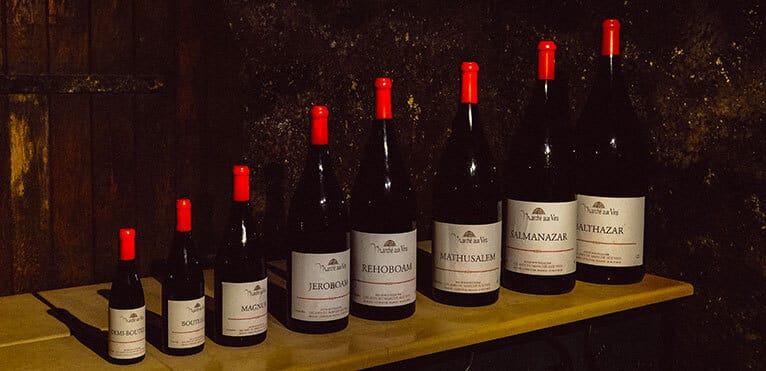
Contents
When was the wine bottle invented? Why are bottle necks hollow? Why a cork stopper?
The wine bottle has become a trivial object, but this wasn’t always the case. From its shape to its color, nothing has been left to chance.
A little history…
In ancient times, wine was stored in amphorae. Glass bottles already existed, but they generally contained perfumes and ointments, as they were difficult to produce in large quantities.
It was in the Middle Ages that the bottle was first used to hold wine, and was perfected until it came into general use in the 18th century.
In the 17th century, the English developed a very thick black glass bottle with a wide, solid base. Legend even has it that it was the English diplomat Sir Kenelm Digby who invented the wine bottle as we know it in 1632.
At the same time, in France, the authorities are not in favor of transporting cylinders, as capacities are not yet regulated and may give rise to fraud. But King Louis XV eventually authorized the transport of wine in bottles, and these replace the barrel (which was not always airtight).
It was at this time that it became clear that that the bottle was the best way to preserve and age wine.
Shape and capacity
The 0.75 L capacity was fixed in 1866. It’s not chosen at random: a case of 6 bottles is equivalent to a gallon in the British imperial system. What’s that got to do with anything? Well, the reason the French are so keen to use this system is, of course, that the English are their biggest customer!
There are also different types of bottle: the fine-necked Burgundy bottle, the cylindrical Bordeaux bottle, the flute-shaped Alsace bottle, the Rhône bottle and the Provençal bottle. The shapes are varied, but the capacity is universal, with the exception of the “clavelin” bottle reserved exclusively for Jura vin jaune.
Glassblowers didn’t know how to make flat bottle bottoms, so to stabilize the bottles, they made hollow bottoms, otherwise known as “pits”.
Why is the wine bottle green?
The green color helps protect the wine from UV rays, especially when stored. But color is really more of an aesthetic choice. White and rosé wines have a less protective tint to enhance their color.
No bottle, no champagne!
Without the glass bottle, the fieldagne would never have seen the light of day! In fact, it’s thanks to the second fermentation that takes place in a closed, resistant bottle that effervescence is created. The shape of the bottle and its hollow base make it a solid container capable of containing the pressure of sparkling wines.
The cork stopper
Cork stoppers were already used in ancient times to seal amphoras. It was the English who rediscovered its virtues in the first half of the 17th century, first as a preservative for medicinal potions, then for spirits.
In France, it made a comeback in the 17th century. Myth or history, a certain monk named Dom Pierre Pérignon decided to use a cork stopper to close bottles of Champagne wine. As corks are both liquid-tight and air-permeable, they oxygenate the wine and preserve its aromas.
Alfred de Musset wisely wrote: “The bottle doesn’t matter as long as you get drunk!“
Photo: Francesco Ungaro / Unsplash